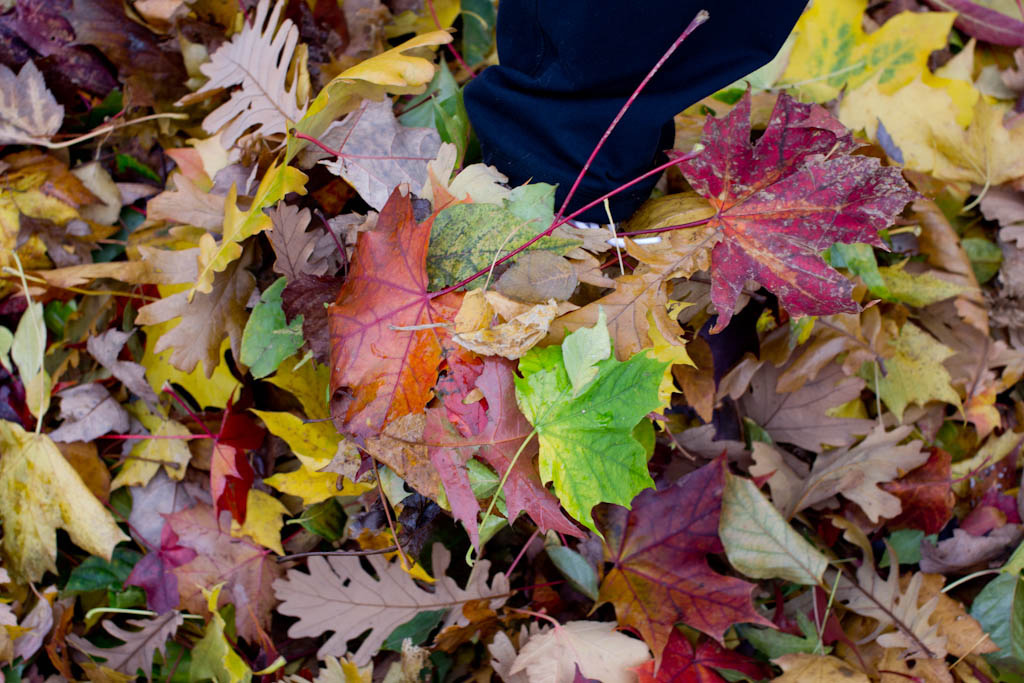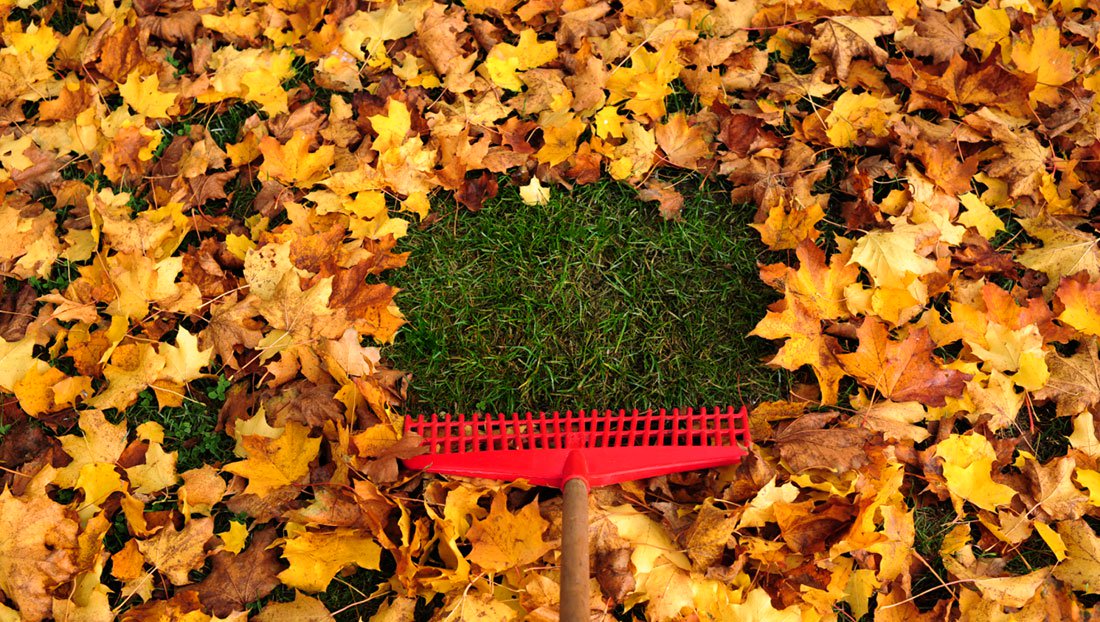
Philadelphia’s autumn leaves are beautiful, but nobody wants to be dealing with a pile of rotting, soggy leaves come springtime. Leaves that are left to rot on the lawn provide shelter for a variety of lawn and garden pests, and can also induce allergies in some people, as they foster mold growth.
Whether you’re trying to tidy up your lawn after the first big fall gust, or playing catch-up in April, there are several easy ways to make quick work of your leaf removal duties if you don’t want to hire a local lawn care pro to do it for you.

1. Skip the raking
Most people procrastinate dealing with their leaf piles because they hate the chore of raking. Instead of raking, consider mulching your leaves.
If you grind leaves down into small pieces, you can create a fantastic compost material or garden fertilizer.
Or, if you’re feeling particularly lazy, you can leave the shreds right on the lawn. Shredded leaves don’t induce fungal growth or pest infestations like full leaves do; when chopped into fine pieces, they don’t provide enough shelter for either to grow.
To mulch your leaves, consider purchasing a lawn mower with a built-in mulcher. You can also install a serrated blade on your current mower.
2. Wait for dry weather
Don’t rake or mulch immediately after heavy rain. Mulch on a dry day so the leaves chop finely and evenly, or rake when it’s equally dry so that the leaves don’t clump together.
Wet leaves become slimy and will be more difficult to bag. Clear days are best for any lawn cleanup.
3. Be creative with your leaf removal
Consider using materials like plastic tarps or cardboard to help remove the excess leaves on your lawn. If you have a cardboard box, you can remove the top and bottom flaps, then tape the ends together. When you drag the piece of cardboard across your lawn, you can pick up a huge volume of leaves in just one fell swoop.
Similarly, you can use a tarp to give your arms a break. Lay a tarp on the lawn and rake the leaves onto its surface. When you’re done raking, fold it up and carry it to the trash, or to the bags. This is much easier than piling leaves into a huge mound before bagging them.
4. Blow away your leaves
A leaf blower is one of the best methods of leaf removal, but these can be expensive and not always effective — especially if you have nowhere to blow them to (unless you really dislike your neighbors).
You can let the wind do the work for you if you don’t want to invest in a leaf blower — simply rake your leaves in the direction the wind is blowing, and let them get carried away.
5. Invest in the right rake
We already told you that there are ways to get around leaf removal without raking — but if only raking will get the job done, make sure you’re prepared with the proper tools.
The best leaf rakes are those that are larger than average, as you can collect more leaves in one pass. Most hardware stores and lawn and garden centers carry rakes that are up to 30 inches wide, and you can purchase even larger ones online in most cases.
You might also consider a “no-clog” rake, which prevents leaves from getting stuck inside or skewered by the tines.
6. Remove all lawn debris first
If you’re using a leaf blower or mulcher, make sure you clear your lawn before beginning to operate the machinery. Small items like twigs and rocks can become lodged in the machines and damage their impellers.
By thoroughly removing all lawn debris before you start, you will eliminate the need to constantly stop and clear the machine — or worse, the potential to inflict serious damage.
7. Keep your roof clean
Don’t neglect your home’s roof when clearing your lawn of leaves. Leaves can cause mold buildup and harbor moisture that can become a breeding ground for mosquitoes.
Pull leaves off your roof with a broom or blow them away with a leaf blower. You might also consider installing a gutter guard to reduce the likelihood that small leaves and other debris will clog your gutters.
Whether you choose to remove your leaves in the fall, spring, or summer, you can’t escape this required task. Leaf piles on your lawn can cause will kill the grass (think snow mold) and plants you have worked so hard to cultivate.
By taking a few extra steps to get rid of your leaves now, you’ll be able to enjoy a more luscious, healthy landscape later on.
And if you’d rather leave the fall yard work to the pros, our LawnStarter’s Philadelphia landscaping experts can get rid of your leaves and get your grass ready for winter.